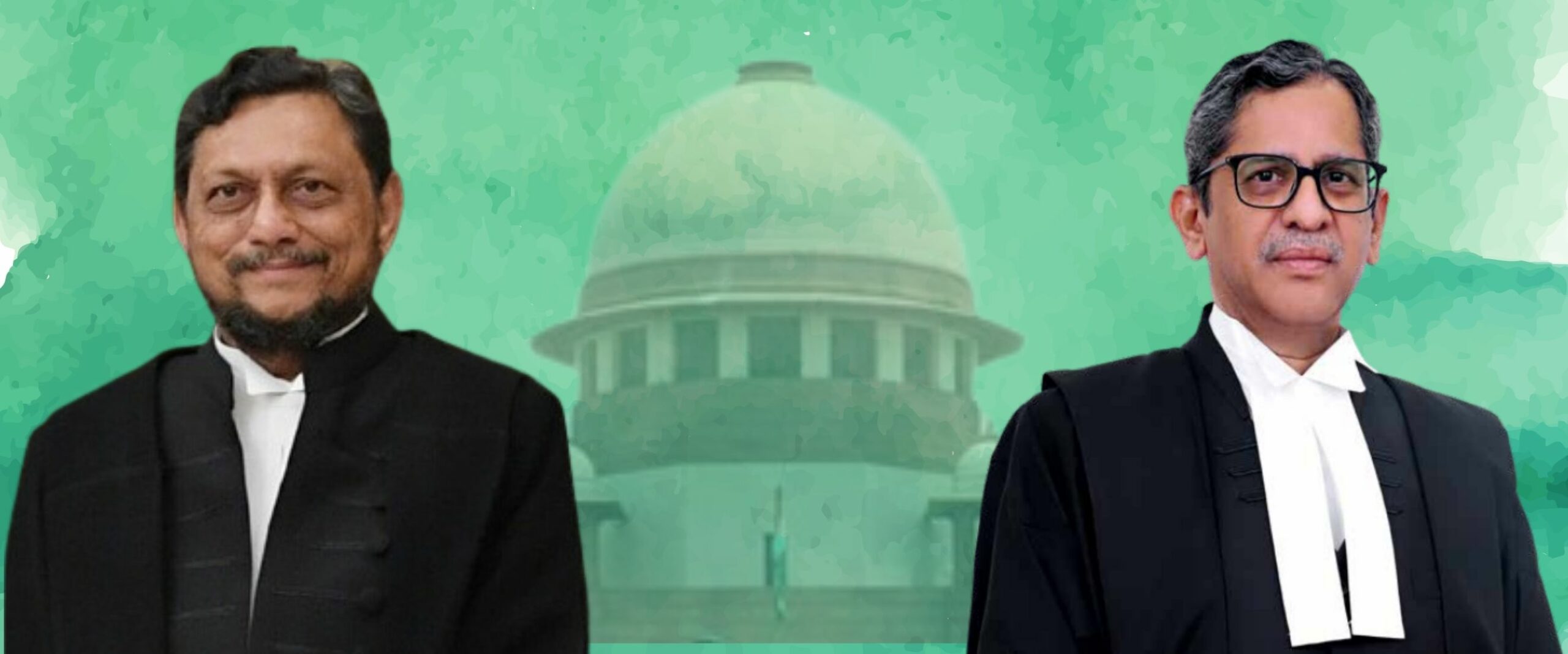Court Data
Pendency Across Three Waves of COVID 19 and Two CJIs
Comparing the pendency of cases during former Chief Justice Sharad Bobde’s tenure with incumbent Chief Justice N.V. Ramana.

The Supreme Court’s response to the COVID-19 pandemic can be traced back to mid-March 2020, just before the first national lockdown was announced in India. On March 22nd 2020, the SC commenced listing matters that required urgent hearing through video conferencing.
No amount of preparation could have predicted the pandemic’s grave impact on the SC. It hindered litigants’ access to Court, worsening the already alarming pendency of cases. Since the lockdown was imposed, the pendency of cases has risen 14.7% from March (61,142) to February 2022 (70,154).
As these numbers increased, the CJI seat exchanged hands: on April 24th 2021, N.V. Ramana took over the reins of managing a pandemic-hit Court from former CJI Sharad Bobde.
Across three waves of COVID-19, did pendency rates shift between the tenures of the two CJIs? With Ramana CJI set to retire in five months, what levels of pendency is his successor likely to inherit? To find out, we compared the pendency of cases during former Chief Justice Sharad Bobde’s tenure with incumbent Chief Justice N.V. Ramana.
The Pandemic Under CJI Bobde
Figure 1 plots the number of pending cases during the terms of Bobde CJI and Ramana CJI. The x axis plots each month of their tenure. The y axis plots the number of pending cases.
Justice Bobde assumed the office of the CJI in November 2019. Overall, during his tenure, pendency increased by 14%. As depicted in Figure 1, a significant portion of that increase occurred during the first wave of the COVID-19 pandemic.
Previously, SCO has documented that the overall COVID-19 pandemic in 2020 caused a sharp increase in the number of pending cases, with the Court tackling both the lack of physical hearings and sick judges. This effect was particularly felt in the first waves of the pandemic, when virtual courts had not been set up at a large scale.
That said, when the national lockdown and limitations to the Court’s functioning were imposed, pendency was not affected in the initial months. Between March 2020 and June 2020, pendency remained largely stagnant. This can be attributed to a drastic fall in the number of cases that were filed in Court. In May 2020, however, Bobde CJI launched an e-filing system so litigants may remotely file cases and pay Court fees. The number of cases filed increased in the subsequent months and pendency grew proportionally.
After June 2020, pendency of cases grew at an average rate of 1.27% a month. When Bobde CJI retired, there were over 67,898 cases pending at the Supreme Court.
The Pandemic Under CJI Ramana
On April 20th, the Court decided to hear only urgent matters. Just four days later, Ramana CJI assumed office on April 24th 2021, when the outbreak of the second wave of COVID-19 was just beginning. By May 10th, the Court went into summer vacation till June. Disposal of cases during vacation often falls, since the Court’s functioning is limited to vacation benches.
Figure 1 shows that between April to July, pendency continues to grow before slowing down in August. Two key changes in August 2021 may have impacted pendency of cases. First, 9 Judges were appointed to the SC bringing the strength of the Court to 33 judges. Second, the Court resumed physical hearings.
On January 2nd 2022, the Court returned to virtual hearings due to the third wave of COVID-19. It continued to hear cases virtually until mid-February. The Court has functioned in a hybrid capacity since, with both physical and virtual hearings.
The Challenges Faced By the COVID Judges
The increase in pendency of cases slowed down during the second wave. The pendency of cases has grown by 3.3% across Ramana CJI’s tenure so far, a drastically lower rate than the 14% recorded during Bobde CJI’s tenure. A pure numbers comparison of Bobde and Ramana CJIs shows that increase of pendency has stabilised in Ramana CJI’s tenure. However, it is important to note that the challenges faced by both were vastly different.
Firstly, Bobde CJI served for 17 months, while Ramana CJI is in the 11th month of his projected 16-month tenure. Further, since vacation dates differ from year to year, this too may have affected the difference in pendency in their tenures.
More importantly, the first wave came with unprecedented challenges, requiring the Supreme Court e-committee to immediately adapt to the demands of the pandemic. Replacing physical Court hearings with virtual hearings only developed during the first wave. By the time the third wave hit, on the other hand, a protocol to deal with the pandemic was already in place.
Ramana CJI has five more months remaining in his tenure. With a record high of over 70,000 cases pending at the SC, the goal of tackling pendency may guide the rest of his tenure.